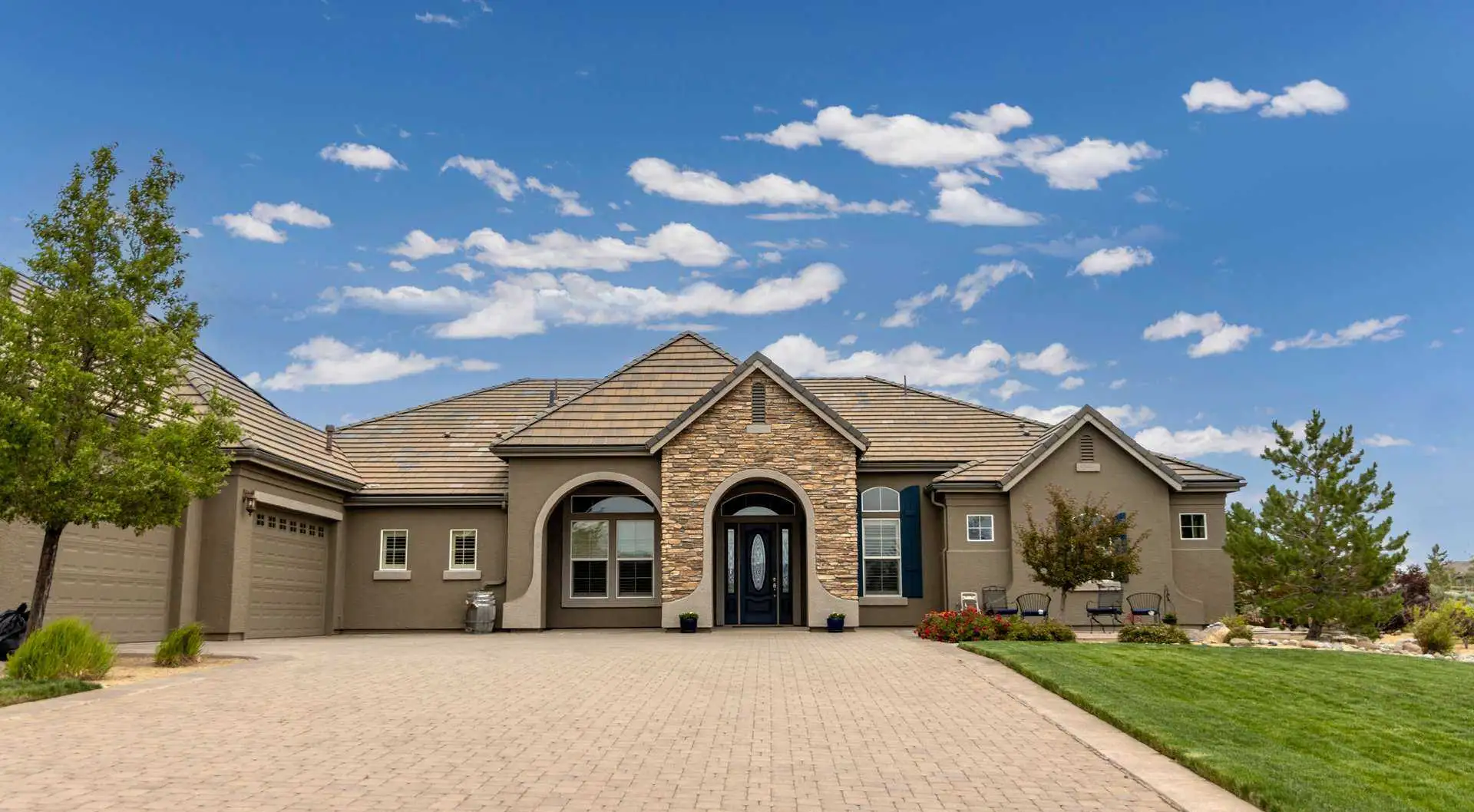FHA Loan Limits for 2026

FHA loan limits vary by county and range from $541,287 to $1,249,125 in 2026 for a 1-unit home.
FHA loan limits are quite generous, exceeding half a million dollars anywhere in the country. New 2026 limits will make this program even more popular with first-time and repeat buyers.
Key Takeaways
FHA loan limits vary by county and range from $541,287 to $1,249,125 in 2026 for a 1-unit home.
Maximum loan amounts differ by the type of property. Two-, three- and four-unit loan limits are higher than those for single-family homes.
Conventional limits are higher than FHA loan limits in most areas.
Regardless of local limits, you still need the income to support the loan you're applying for and must also meet standard FHA requirements.
FHA Loan Limits by Home Type and Location
The maximum amount for an FHA loan varies based on the location and hone type. For example, FHA multifamily loan limits are higher than those for 1-unit homes.
2026 FHA Loan Limits
| Units | Standard FHA Loan Limits 2026 | FHA High-Cost Limits 2026 | FHA Limits Alaska, Hawaii, Guam, USVI 2026 |
|---|---|---|---|
| 1 | $541,287 | $1,249,125 | $1,895,525 |
| 2 | $693,050 | $1,599,375 | $2,426,675 |
| 3 | $837,700 | $1,933,200 | $2,933,300 |
| 4 | $1,041,125 | $2,402,625 | $3,645,350 |
The maximum FHA loan for a single-family home in most parts of the United States is $541,287 in 2026. However, living in a county designated as a high-cost area may make you eligible for higher limits.
In some areas, the single-unit loan limit climbs as high as $1,249,125, with many communities across the country having limits between these two figures.
FHA loan limits in the special exception areas of Alaska, Hawaii, Guam, and the US Virgin Islands are even higher due to the cost of construction in these locales. The single-family limit in these areas is $1,895,525.
For a better idea of the current limits for FHA-backed mortgages, here’s a chart comparing maximum loan amounts by area and the number of residences on the property.
How Do FHA Loan Limits Compare to Conventional Loan Limits?
FHA loan limits tend to be lower than conventional loan limits in most parts of the country. While the base FHA limit for a single-family home is $541,287 conventional loan limits start at $832,750.
Here’s a chart showing how FHA mortgage limits stack up against conforming loans in standard-cost areas.
FHA vs Conventional Loan Limits 2026
| Units | Standard FHA Limits 2026 | Standard Conventional Limits 2026 |
|---|---|---|
| 1 | $541,287 | $832,750 |
| 2 | $693,050 | $1,066,250 |
| 3 | $837,700 | $1,288,800 |
| 4 | $1,041,125 | $1,601,750 |
In high-cost areas, however, the FHA loan limit is in sync with conventional maximums. In these counties, you may be able to obtain an FHA mortgage for the same amount as a conventional loan and for both single-unit and multifamily loan limits.
Keep in mind that many housing markets may have loan maximums between the standard and high-cost amounts.
For example, the FHA loan limit for a one-unit home in San Antonio, Texas, is $557,750, while conventional lenders abide by their standard limit of $832,750.
The best way to find your local FHA county loan limits is with HUD’s FHA loan limit tool. Simply choose your state and county, make sure the tool is set to “FHA Forward” and the current year, and then hit “send.”

Image: HUD. Callout boxes added.
You can check the conventional loan limits – also referred to as conforming loan limits – for your area with the Fannie Mae lookup tool.

Image: Fannie Mae. Callout box added.
How Do FHA Loan Limits Compare to Other Loan Types?
FHA and conventional mortgages aren’t the only two options available to homebuyers. Other loan programs have different limits; some don't even set a maximum mortgage size.
USDA Loan Limits: The USDA Rural Development program does not set loan limits. Its income limits naturally cap how much someone can borrow.
VA Loan Limits: The Department of Veterans Affairs does not set a maximum loan limit for VA loans unless you've used a VA loan before and have remaining eligibility.
Jumbo Loan Limits: Jumbo loans are mortgages that exceed an area’s conforming loan limits. Each lender sets their own rules for issuing jumbo loans, including the maximum limit. Some mortgage companies may set jumbo loan limits at $2 or $3 million, while others let qualified applicants borrow much more.
How FHA Loan Limits Work
FHA loan limits are established annually by the US Department of Housing and Urban Development (HUD) in accordance with the National Housing Act. The maximum mortgage for standard-cost areas is 65% of the national conforming loan limit.
For example, the standard FHA single-family limit of $541,287 is 65% of the standard conventional limit of $832,750.
The FHA loan limit for high-cost areas is set at 150% of the national conforming limit, which is the same as for conventional mortgages.
In some communities, HUD sets FHA loan limits by county based on the local cost of housing. Counties between the base and high-cost figures have FHA loan limits fixed at 115% of the area’s median home sale price.
HUD typically announces annual limit increases in late November, with changes taking effect on January 1.
Your Personal Loan Limit Is Based on Income and Down Payment
Remember that the loan limits covered so far are program maximums – the amount you're eligible to borrow may be lower. Regardless of the limit for your county, you still need to have the income and down payment to support the mortgage you’re applying for.
For example, if the lender you’re working with allows a housing (or DTI) ratio of 45%, your monthly housing expense can add up to 45% of your qualifying income.
In this scenario, if you earn $5,000 per month, you may qualify for an all-inclusive house payment as high as $2,250. While numerous factors impact how your payment amount translates into your personal loan limit, the personal limit here is likely well below FHA county loan limits.
Similarly, the size of an FHA loan is also limited by the down payment you have available. Lenders can loan up to 96.5% of a property's value, with the buyer expected to contribute 3.5% (although you may be able to use down payment assistance to reduce this amount).
This means that to use an FHA loan to purchase a $400,000 home, you need a down payment of $14,000 in addition to your closing costs and any required reserves. If you only have $10,000 available to put down, your purchasing power is limited to around $276,000.
Loan Limits Apply to the Loan, Not the Home Price
One common misconception about loan limits is that they apply to the home price. That’s not the case. In reality, FHA loan limits are simply the maximum amount of money FHA lenders can let someone borrow on a single property.
There is no limit to the price of a home you can purchase with an FHA loan (or conventional mortgage, for that matter).
For example, if you live in a standard-cost area and want to purchase a $1 million home, you could borrow $541,287 with an FHA loan and cover the remainder of the price in cash or other financing.
Can You Get More Than the FHA Loan Limit?
If you're worried that FHA county loan limits may hold you back from purchasing a home, you may have other options for borrowing more.
Some strategies for expanding your homebuying power include:
Checking whether your local area offers higher standard limits
Applying for a conventional mortgage
Using a combination of loans
Increasing your down payment
How FHA Jumbo Loans Work
While the FHA does not technically have a jumbo loan program, some lenders refer to FHA loans with higher-than-standard limits as FHA jumbo loans.
These loans follow the same FHA guidelines. However, some lenders impose their own higher credit score requirements or other overlays for FHA mortgages that are above the standard limit.
Our Take: Use Higher Loan Limits to Avoid Jumbo Loans
Standard jumbo loans are useful for high-net-worth individuals buying expensive homes. However, they are much harder to qualify for than an FHA or standard conventional loan.
For example, you may need 20% down for a jumbo loan. A few lenders offer jumbo loans at 5-10% down, but not many.
Plus, you’ll need near-perfect credit for most of these products.
However, if you’re buying a home in a high-cost area like Seattle, Los Angeles, Denver, or Boston, you may qualify for a large FHA or conventional loan, bypassing the extra requirements for jumbo loans.
| City | FHA Loan Limit | Conventional Loan Limit |
|---|---|---|
| Seattle | $1,063,750 | $1,063,750 |
| Los Angeles | $1,249,125 | $1,249,125 |
| Denver | $862,500 | $862,500 |
| Boston | $962,550 | $962,550 |
Check your local limits if you’re considering a jumbo loan. You may find it easier to qualify for low-down-payment FHA or conventional financing.
Other FHA Loan Requirements
In addition to adhering to FHA loan limits for your area, qualifying for an FHA-backed mortgage also means meeting other program requirements.
Credit Score / Down Payment
The FHA requires a minimum credit score of 580 to qualify for a 3.5% down loan. Applicants with a 10% down payment may be eligible with a score of 500, although not all lenders offer this option.
Debt-to-Income Ratio
Lenders use your debt-to-income (DTI) ratio to determine what size payments – and how large of a loan – to qualify you for. In general, FHA lenders can approve borrowers with a total DTI as high as 56.9% in rare cases.
Mortgage Insurance
All FHA loans have an upfront mortgage insurance premium (UFMIP) of 1.75%. You can wrap this fee into your loan balance or pay for it at closing. You are also responsible for monthly mortgage insurance premiums, charged at an annual rate of roughly 0.5% of your loan amount.
Appraisal / Minimum Property Requirements
While nearly all purchase loans require a home appraisal, FHA mortgages have stricter property standards than some other programs. In addition to assessing value, your FHA appraiser checks to ensure the home meets the agency's minimum property requirements.
Employment Requirements
Most FHA borrowers need to be currently employed and have two years of consistent documented income, including pay stubs and tax returns. However, getting approved with employment gaps or a shorter work history may be possible. Self-employed borrowers should plan on needing to submit additional documentation.
Generous Loan Limits Help You Buy More Home
FHA loan limits are typically lower than conventional mortgages, although some areas have higher maximums than others. In high-cost communities, the limits for FHA and conventional loans may be the same.
To discover the FHA limit for your area and the personal loan limit you can qualify for, check out today's current mortgage rates and apply with an FHA lender serving your community.




